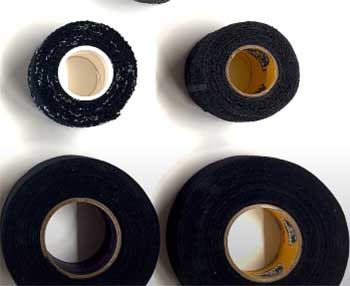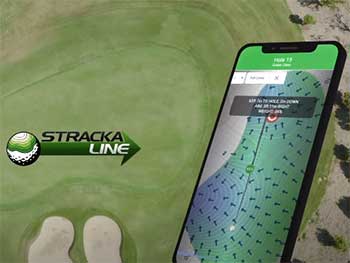I’m standing on the fairway, squinting at a flag 200 yards away, and my old rangefinder just isn’t cutting it. Sound familiar? I’ve been testing the Redtiger and Gogogo Sport Vpro GS03 rangefinders to find out which one deserves a spot in your golf bag.
This article breaks down their key features, pros, cons, and real-world performance in a head-to-head comparison. Whether you’re a weekend golfer or a seasoned pro, I’ll help you decide which device fits your game best.
A Brief Comparison Table
| Feature | Redtiger Rangefinder | Gogogo Sport Vpro GS03 |
| Price | ~$100–$130 | ~$90–$120 |
| Magnification | 7x | 6x |
| Range | Up to 1200 yards | Up to 1000 yards |
| Slope Mode | Yes, switchable | Yes, switchable |
| Accuracy | ±1 yard | ±1 yard |
| Battery | Rechargeable (USB) | CR2 battery (non-rechargeable) |
| Weight | ~0.4 lbs | ~0.4 lbs |
| Magnet Mount | Yes | No |
| Vibration Feedback | Yes | Yes |
| Water Resistance | IP54 (splash-proof) | IP54 (splash-proof) |
| Display | LCD (black only) | LCD (black only) |
| Warranty | 2 years | 1 year |
Why I Tested These Rangefinders?
As a golfer who’s tired of second-guessing yardages, I wanted a rangefinder that’s reliable, easy to use, and won’t break the bank. Redtiger and Gogogo are two brands that keep popping up in golf forums and Amazon reviews, promising premium features at budget prices.
But are they too good to be true?
I took both devices to the course, tested them in various conditions, and dug into their specs to see how they stack up. My goal? To give you a clear picture of what each offers so you can make an informed choice.
Redtiger Rangefinder: My Experience
The Redtiger rangefinder caught my eye with its sleek design and a price tag that doesn’t scream “luxury.” At around $100–$130, it’s positioned as an affordable yet feature-packed option. Here’s what I found after using it for a few rounds.
Key Features of Redtiger
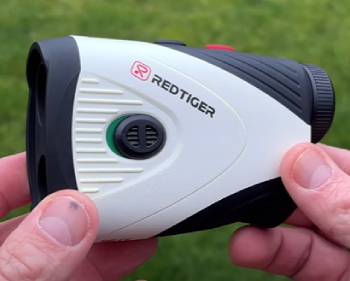
The Redtiger boasts a 7x magnification, which makes distant flags look crisp and clear, even beyond 200 yards.
Its range stretches up to 1200 yards, though I rarely needed more than 300 for golf.
The slope mode, which adjusts for elevation, is a game-changer on hilly courses, and I love that it’s switchable for tournament play—red light for slope off, green for on.
The built-in magnet is another standout, letting me stick it to my cart for quick access.
Plus, it’s rechargeable via USB, so I’m not hunting for batteries mid-round. Vibration feedback confirms when it locks onto the target, and the IP54 rating means it can handle a light drizzle.
Pros of Redtiger
- Magnetic Mount: This was a lifesaver. I could slap it onto the cart frame and grab it without fumbling. It’s a small detail, but it speeds up play.
- Rechargeable Battery: One charge lasted me three full rounds, and I just plug it into my phone charger. No more buying CR2 batteries.
- 7x Magnification: The extra zoom made it easier to pick out flags on crowded greens compared to 6x devices.
- Solid Build: It feels sturdy, with a grippy case that’s comfortable to hold. The included carabiner and belt clip are nice touches.
- Two-Year Warranty: Double the coverage of many competitors, which gives me peace of mind.
Cons of Redtiger
- Slightly Bulkier: It’s not heavy, but it’s a tad chunkier than the Gogogo, which I noticed when slipping it into my pocket.
- LCD Display Only: The black-only display was fine in daylight but harder to read in low-light conditions compared to premium models with red/black options.
- Customer Support Variability: Some online reviews mention slow responses from Redtiger’s support, though my replacement for a minor issue arrived quickly.
- Slope Calculations: On very steep hills, the slope-adjusted yardage felt slightly off compared to my buddy’s high-end Bushnell.
Real-World Performance
On the course, the Redtiger was a reliable companion. I tested it at my local course, where elevation changes are common. The slope mode gave me confidence on uphill shots, and the vibration feedback was reassuring when locking onto pins.
It picked up flags at 250 yards without issue, though background trees occasionally confused it in pin-seeker mode. The magnet was a game-changer—I’d stick it to the cart and grab it in seconds.
One downside: in early morning fog, the display was a bit dim, making yardages harder to read. Overall, it’s a fantastic value for the price.
Gogogo Sport Vpro GS03: My Take
The Gogogo Sport Vpro GS03 is another budget-friendly contender, often priced between $90 and $120. It’s a favorite among casual golfers, and I was curious to see if it could match the Redtiger’s performance. Here’s what I discovered.
Key Features of Gogogo

The Gogogo offers 6x magnification and a range of up to 1000 yards, which is plenty for most golf courses.
Like the Redtiger, it has a switchable slope mode, vibration feedback, and an IP54 splash-proof rating.
The pin-seeker mode helps lock onto flags, and it’s lightweight at about 0.4 pounds.
One key difference is the battery—it uses a non-rechargeable CR2, which isn’t as convenient.
The display is a standard LCD, and it comes with a carrying case and lanyard.
Pros of Gogogo
- Affordable Price: At the lower end of the price spectrum, it’s a steal for the features you get.
- Lightweight and Compact: It slips easily into a pocket or bag, making it ideal for golfers who walk the course.
- Fast Readings: I was impressed by how quickly it locked onto targets, often faster than the Redtiger.
- Simple Design: The straightforward interface made it easy to use right out of the box, even for a rangefinder newbie.
- Reliable Slope Mode: The slope adjustments were consistent and helped me navigate tricky elevation changes.
Cons of Gogogo
- Non-Rechargeable Battery: CR2 batteries aren’t cheap, and I had to swap one out after about 20 rounds. It’s a hassle compared to USB charging.
- No Magnet: Without a magnetic mount, I found myself fumbling to retrieve it from my bag more often.
- 6x Magnification: The slightly lower zoom made distant flags less sharp, especially beyond 200 yards.
- One-Year Warranty: Shorter than Redtiger’s, which might concern some buyers.
- Build Quality: The plastic feels a bit cheaper, and the case isn’t as grippy as the Redtiger’s.
Real-World Performance
The Gogogo performed admirably during my rounds. It was lightning-fast at picking up yardages, often giving me a reading in under a second. The slope mode was spot-on for most shots, and I liked how compact it felt in my hand.
However, the lack of a magnet meant I was constantly digging it out of my bag, which slowed me down. The 6x magnification was fine for most holes but struggled slightly on longer par-5s.
In light rain, it held up well, but I worried about the battery compartment’s seal. It’s a solid choice for budget-conscious golfers but misses some of Redtiger’s conveniences.
How Redtiger And Gogogo Rangefinders Compare?
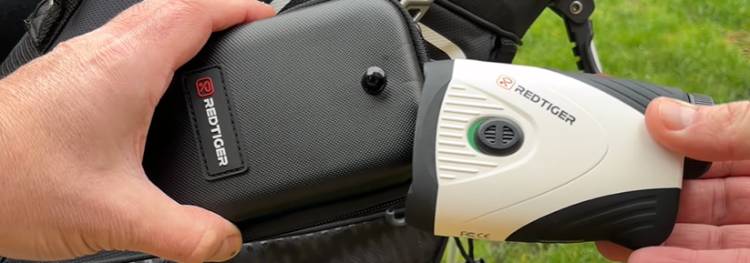
Now that I’ve used both rangefinders, let’s break down how they compare across key factors.
- Accuracy and Speed
Both devices are accurate to within ±1 yard, which is plenty for amateur golfers like me. In side-by-side tests, they gave identical straight-line distances to flags at 150–250 yards.
The Gogogo edged out the Redtiger in speed, often locking onto targets a fraction of a second faster. However, the Redtiger’s 7x magnification made it easier to isolate pins on busy greens, giving it a slight edge in precision for longer shots.
- Ease of Use
The Redtiger’s magnetic mount and rechargeable battery make it more convenient for quick access and long-term use. I loved not worrying about battery replacements.
The Gogogo’s compact size is great for portability, but the lack of a magnet and the CR2 battery were minor frustrations. Both have intuitive interfaces, with clear buttons for switching between modes (slope, pin-seeker, speed).
- Durability and Design
Both rangefinders are splash-proof (IP54), so they can handle light rain or morning dew. The Redtiger feels sturdier, with a grippy case and a premium vibe despite its low price.
The Gogogo’s plastic build feels less robust, and the lack of a magnet or belt clip makes it less versatile. The Redtiger’s carabiner and clip options are thoughtful additions for golfers who like to keep their gear handy.
- Battery Life
The Redtiger’s rechargeable battery is a clear winner. A single charge lasted me multiple rounds, and I could top it up with a standard USB cable. The Gogogo’s CR2 battery lasted about 20 rounds, but replacements cost $5–$10 each, which adds up.
If you play frequently, the Redtiger’s USB charging will save you money and hassle.
- Slope and Tournament Legality
Both devices offer switchable slope modes, making them tournament-legal when slope is turned off. The Redtiger’s red/green indicator clearly shows when slope is disabled, which is reassuring for rule-sticklers.
The Gogogo’s slope switch is less obvious but still effective. In practice, both provided reliable slope-adjusted yardages, though the Redtiger occasionally seemed less precise on extreme elevation changes.
- Price and Value
The Gogogo is typically $10–$20 cheaper, making it the budget king. However, the Redtiger’s extra features—magnet, 7x magnification, rechargeable battery, and longer warranty—justify the slightly higher price.
If you’re looking for the best bang for your buck, the Redtiger feels like a premium product at a budget price. The Gogogo is ideal if you want the absolute lowest cost without sacrificing core functionality.
Which Rangefinder Is Right For You?
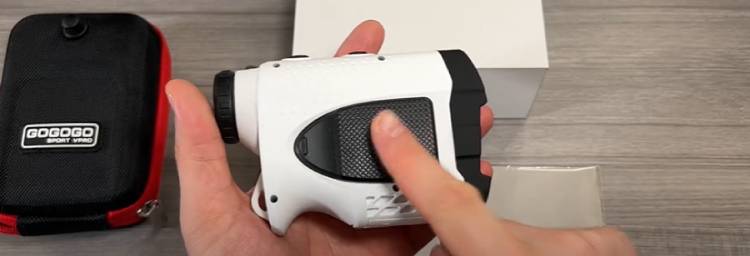
Choosing between the Redtiger and Gogogo depends on your priorities. Here’s how I’d break it down:
- Pick the Redtiger if: You value convenience and long-term savings. The magnetic mount, rechargeable battery, and 7x magnification make it a versatile choice for golfers who play regularly and want a device that feels high-end without the high-end price. It’s perfect if you like sticking your rangefinder to your cart or need extra zoom for long shots.
- Pick the Gogogo if: You’re on a tight budget or prefer a lightweight, no-frills device. Its fast readings and compact design are great for casual golfers who don’t mind buying batteries and can live without a magnet. It’s a solid entry-level option that gets the job done.
For me, the Redtiger edges out the Gogogo because of its practical features and better value over time. The magnet and USB charging were game-changers, and the 7x magnification gave me confidence on longer holes.
But if you’re just starting out or only play occasionally, the Gogogo’s lower price and simplicity might be all you need.
Also Read: Is Eagle Eye Golf Rangefinder Any Good?
Frequently Asked Questions (FAQ)
Yes, Redtiger rangefinders are reliable, accurate, and packed with features like a magnetic mount and rechargeable battery, making them a great value for the price.
The “best” depends on your needs, but premium models like the Bushnell Pro XE or Nikon Coolshot Pro II are top-tier. For budget options, Redtiger offers excellent value.
Tiger Woods has been spotted using a Bushnell rangefinder, likely the Tour V5 or Pro XE, known for their precision and durability.
Most pros use high-end Bushnell or Nikon models, such as the Bushnell Tour V5 Shift or Nikon Coolshot Pro II, for their accuracy and advanced optics.
Wrapping It Up: Your Next Step
You’re out there on the course, trying to shave strokes off your game, and a reliable rangefinder can make all the difference. I’ve put the Redtiger and Gogogo Sport Vpro GS03 through their paces, and both are solid choices for budget-conscious golfers.
The Redtiger’s magnetic mount, rechargeable battery, and 7x magnification make it my top pick for convenience and long-term value. But if you want to save a few bucks and don’t mind a simpler design, the Gogogo is a dependable alternative.
Grab the one that fits your game, and let’s hit the fairways with confidence!
